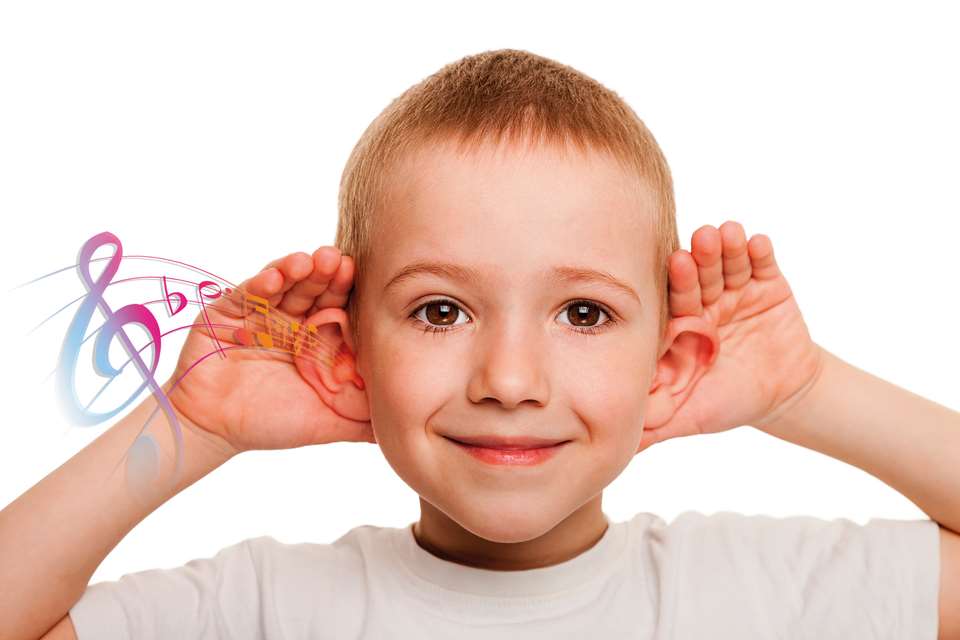A Unique Child: Health - A guide to ... glue ear
Vicki Irwin
Sunday, March 8, 2015
Glue ear is one of the most common childhood illnesses, but what are the symptoms and how is it treated? Audiologist Vicki Kirwin explains.

For ears to work properly, the middle ear needs to be kept full of air. The air travels through the eustachian tube, which runs from the middle ear to the back of the throat. In children, this tube doesn't work as well, and if it becomes blocked air cannot enter the middle ear. When this happens, the cells lining the middle ear begin to produce a runny fluid, which can get thicker as it fills the middle ear.
With fluid blocking the middle ear, it becomes harder for sound to pass to the inner ear, making quieter sounds difficult to hear. It can be like listening to the world with both fingers stuck in your ears. It is hard work - try it for yourself!
If a child has glue ear, they can't always hear everything that you say, so it is no wonder they are tired and irritable or just want to be left on their own.
How many children are affected? And when?
Eighty per cent of children will be affected by glue ear before they reach the age of ten, making it one of the most common childhood illnesses. Children under the age of five are the largest group affected.
What are the symptoms?
- Glue ear can sometimes develop unnoticed, but look out for:
- changes in behaviour, such as becoming tired and frustrated, poor concentration, or preferring to play alone
- not responding when called
- difficulty working out which direction a sound comes from
- changes in their progress at school or nursery
- delayed speech development
- frequent ear infections.
Some of these behavioural signs can be mistaken for stubbornness, rudeness and being naughty.
What are the problems if the condition goes undiagnosed?
A prolonged period of time with reduced hearing can affect the way in which a child's speech develops. For example, parts of words may not be pronounced clearly. Children with glue ear may also fall behind at school and become disruptive if they do not have extra support.
What are the treatments?
If you are worried that a child may have glue ear, or are concerned about the child's hearing in general, advise the parents to arrange an appointment with their family doctor.
The GP will examine the child's ears and refer them to their local hospital if needed. The most common treatments for glue ear are grommets (tiny plastic tubes put into the eardrum) and hearing aids.
Grommets are inserted during a short operation under general anaesthetic. The fluid in the middle ear is drained away and then the grommets are inserted. The grommets allow air to circulate and help stop more fluid from building up.
Grommets usually stay in place until the eardrum has healed and pushes them out. To help a child understand why they are getting grommets, you can show them the National Deaf Children's Society's 'Harvey Gets Grommets' comic for children.
Some families opt instead for temporary hearing aids, which work by amplifying sounds going into the ear. For more information, see the National Deaf Children's Society's 'Hearing Aids: information for families' booklet and 'Ali Gets Hearing Aids' comic for children, which you can get by calling the freephone helpline on 0808 800 8880.
What are the chances of glue ear recurring?
For the majority of children, glue ear clears up by itself without any treatment within three months and simple changes can make listening easier for them in the meantime. For some, though, glue ear may persist long term or return after the grommets have come out, so it is important that parents follow up any concerns that they might have.
How can I make hearing easier for a child with glue ear?
The advice I offer - found within the National Deaf Children's Society's glue ear resources - is to identify glue ear as soon as possible and I encourage parents and early years practitioners to understand how it can affect children's hearing.
Basic communication tips can help to make listening easier for a child. For example, it is important to get a child's attention before you start talking to them. Make sure that you face the child as much as possible and keep eye contact.
Check also that background noise is kept to a minimum. Speak clearly without shouting and maintain your normal rhythm of speech.
It is important, too, that parents explain to the nursery or school staff about their child's hearing so that practitioners can make arrangements to help. You should make sure that the child is able to sit near a practitioner, they understand what is said and they are not made to feel awkward about asking for things to be repeated.
Vicki Kirwin is resident audiologist for the National Deaf Children's Society
- To read the full glue ear resource page from the National Deaf Children's Society, visit www.ndcs.org.uk/glueear. Parents seeking support can contact the National Deaf Children's Society Freephone Helpline on 0808 800 8880 (voice and text), email helpline@ndcs.org.uk, or chat online at www.ndcs.org.uk/livechat.





